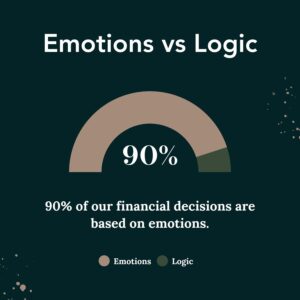
By John De Goey, CFP, CIM
Special to Financial Independence Hub
The very first thing Prime Minister Mark Carney did upon taking office was to scrap the consumer carbon tax. Depending on your degree of cynicism, the move was either desperate or brilliant. There is not much middle ground. He did so while noting that the tax had become divisive.
Few would disagree. The very large majority of economists who study the subject argue that putting a price on carbon is the most efficient and effective way of curbing CO2 emissions. Nobel laureate William Nordhaus has shown this convincingly. Despite the evidence, retail investors simply hated the scheme.
Sometimes there’s a major disconnect between public policy and retail politics. Sensible policies can be rejected because a large percentage of the populace is determined to make decisions based on emotion rather than rationality. People will do what feels good you respective of what the evidence says.
It has been proven many times over that four out of five Canadians were better off paying the tax while cashing the rebate cheques, yet a large percentage of those same Canadians rejected putting a price on carbon at the consumer level. Since about 89% of all emissions come from industrial outputs, the political capital gained by Carney in dropping the consumer portion of the tax far exceeded the opportunity cost of a marginal emissions reduction. Why do so many people viscerally hate policies that conspicuously work against their own self-interest?
Confirmation Bias and Cognitive Dissonance
I believe the answer lies in both confirmation bias and cognitive dissonance. Simply put, people believe what they want to believe:
- a) because it makes them feel good; and
- b) because they engage in herding behaviour and conform to groupthink
It seems a substantial percentage of the human population actively resists evidence. Sometimes, that resistance appears in the form of political populism where ‘elites’, ‘globalists’ and ‘intelligentsia’ are rejected in favour of whatever populist leaders pass off as ‘common sense’. Confirmation bias is essentially pretending to look for evidence dispassionately, well actually looking for evidence that merely ‘confirms your priors.’ Stated differently, if you were predisposed to disliking a tax on carbon, no evidence to the contrary would have likely changed your opinion.
Similarly, in investing, there are several long-held beliefs that many people harbour that often go unchecked. Some are factually false, while others are merely dubious and open to interpretation and debate. In all cases, however, there is at least some suspension of disbelief to protect a pre-existing viewpoint that simply feels better than the evidence-based alternative.
There are some people who might say that the enlightened role of a financial advisor involves some degree of constructive behavior modification. In other words, good advisors get people to do what they ought to do, not what they want to do. Oftentimes, people are unaware of their own predisposition, which can make the advisor’s job a challenge. How might investors act if markets became volatile? Would those actions be appropriate? Getting people to do what’s right for them might be compared to getting people to embrace the virtue of a purposeful carbon tax. It may be that theory and practice don’t easily coincide. You know the difference, right? The difference between theory and practice is that in theory there is no difference, but in practice, there is.
Pre-emptive Modification
Accordingly, given my experience of client behaviour during the global financial crisis, I believe there is virtue in what might be called pre-emptive modification. If one were to build portfolios that had modest exposure to the things that were most volatile, while still being highly diversified and non-correlated, that could go a long way in getting people to adhere to the long-term perspective that they claim to want to apply.
At the risk of sounding Machiavellian, getting people to stay the course is the behavioural end goal. If the means used to achieve that goal involve unconventional products and strategies, so be it. If advisors are judged by the results they help to engineer, then surely finding products that help people stay invested must be seen as a positive step in achieving that goal.
 John De Goey, CIM, CFP, FP Canada™ Fellow, is a Portfolio Manager with Toronto-based Designed Wealth Management. He is the author of three books on the financial industry: The Professional Financial Advisor, Standup to the Financial Services Industry and most recently, Bullshift. This blog is republished from John’s blog and is republished on Findependence Hub with permission. You can find John’s personal website here.
John De Goey, CIM, CFP, FP Canada™ Fellow, is a Portfolio Manager with Toronto-based Designed Wealth Management. He is the author of three books on the financial industry: The Professional Financial Advisor, Standup to the Financial Services Industry and most recently, Bullshift. This blog is republished from John’s blog and is republished on Findependence Hub with permission. You can find John’s personal website here.
The information contained herein has been provided for information purposes only. The information has been drawn from sources believed to be reliable. Graphs, charts and other numbers are used for illustrative purposes only and do not reflect future values or future performance of any investment. The information does not provide financial, legal, tax or investment advice. Particular investment, tax, or trading strategies should be evaluated relative to each individual’s objectives and risk tolerance. This does not constitute a recommendation or solicitation to buy or sell securities of any kind. Market conditions may change which may impact the information contained in this document. Designed Securities Ltd. (DSL) does not guarantee the accuracy or completeness of the information contained herein, nor does DSL assume any liability for any loss that may result from the reliance by any person upon any such information or opinions. Before acting on any of the above, please contact me for individual financial advice based on your personal circumstances. DSL is a member of the Canadian Investor Protection Fund and the Investment Industry Regulatory Organization of Canada.



Why tax something and then give a rebate ? The expense of all the paper work and salaries for accomplishing nothing is a complete waste.